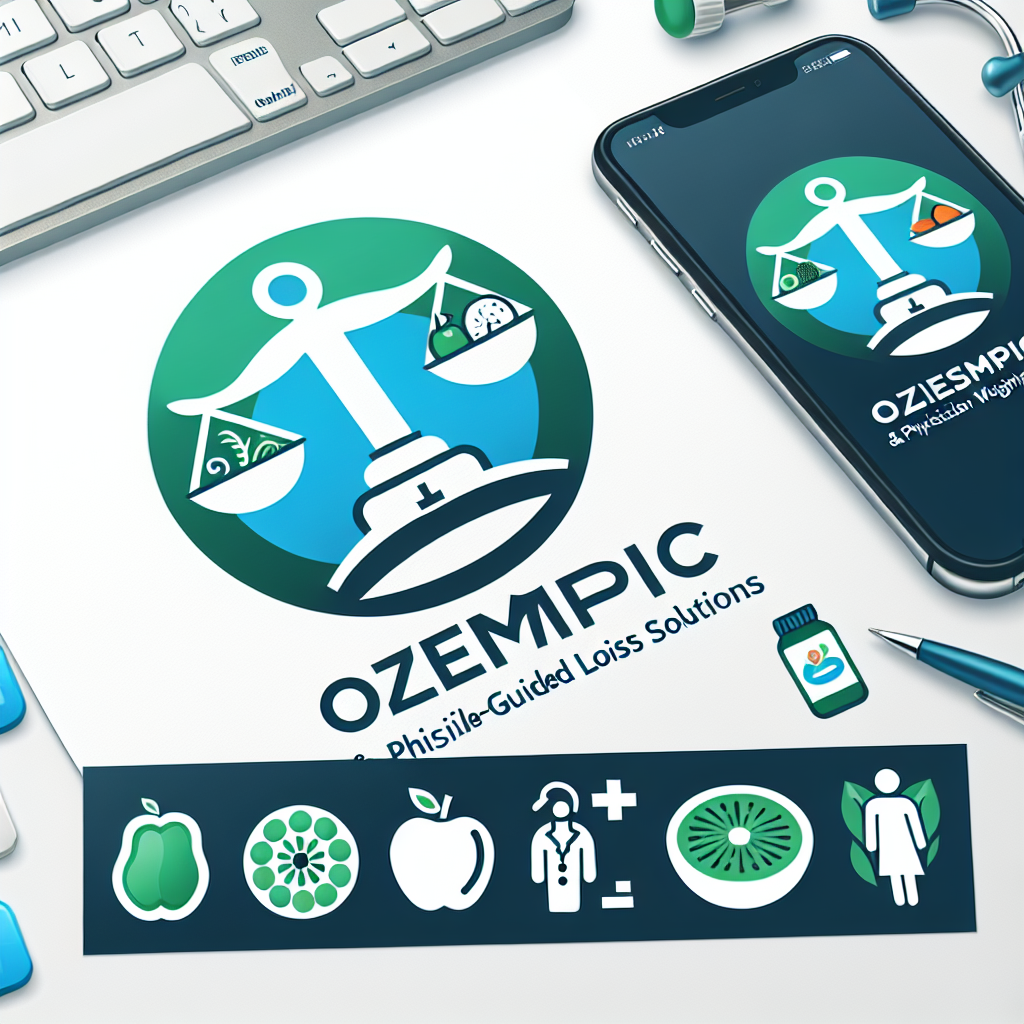Welcome to the Weight Loss Arena: Who Takes the Crown?
Imagine two heavyweight champs stepping into the ring of metabolic magic—Ozempic and Wegovy. Both are GLP-1 receptor agonists, and both promise to help shed those stubborn pounds, but which one truly deserves the crown? As a seasoned health columnist, I’ve seen the buzz, the debates, and the science swirl in this weight loss saga. Today, let’s cut through the noise and explore which of these drugs might be the better choice for your weight loss journey.
The Tale of Two Drugs: Ozempic and Wegovy
First, a quick primer—Ozempic (semaglutide) and Wegovy (also semaglutide but at a higher dose)—are both FDA-approved medications designed to control blood sugar and curb appetite. They work by mimicking GLP-1, a hormone that signals fullness to your brain. But why the different names? The answer lies in dosage and intended use. Ozempic is primarily marketed for type 2 diabetes, while Wegovy is tailored specifically for weight management in obese or overweight individuals.
Which One Is Better for Weight Loss? The Big Question
Can a higher dose truly make a difference?
The answer is a resounding yes—higher doses of semaglutide, like Wegovy, tend to produce more significant weight loss results. Clinical trials show patients on Wegovy can expect to lose around 15% of their body weight, compared to about 10% with Ozempic. But remember, these drugs are not one-size-fits-all solutions. Factors like dosage, individual health, and compliance matter. So, is Wegovy the better option? It depends on your specific goals and medical guidance.
Safety, Side Effects, and the Real Deal
Both drugs share similar side effects—nausea, diarrhea, and occasional dizziness. However, the higher dose associated with Wegovy might increase the likelihood of gastrointestinal discomfort. The key is close supervision by a healthcare provider who can tweak doses and monitor your progress. And for those wondering about long-term safety, reputable sources like the National Institutes of Health highlight the importance of medical oversight in GLP-1 therapy.
Is It Time to Consult a Specialist?
If you’re contemplating which drug might serve your weight loss goals better, why not explore physician-guided options? Clinics now offer telehealth consultations, making it easier than ever to get a prescription legally and safely. Check out this guide to telehealth Ozempic prescriptions and discover how modern medicine meets convenience.
What’s Next in Your Weight Loss Journey?
Choosing between Ozempic and Wegovy is not just a matter of science but also personal health, preferences, and medical advice. If you’re ready to take the next step, reach out to a qualified clinic that offers physician-prescribed treatments. Remember, sustainable weight loss is a marathon, not a sprint, and professional guidance is your best bet for lasting success.
Have you tried either of these medications? Share your story below or visit our contact page for personalized support. Your journey to health deserves expert care and a dash of determination!
Beyond the Buzz: How GLP-1 Medications Are Revolutionizing Weight Loss Strategies
As experts continue to unravel the complexities of weight management, GLP-1 receptor agonists like Ozempic and Wegovy have emerged as game-changers. These medications, rooted in cutting-edge science, don’t just promise short-term results—they pave the way for sustainable, long-term fat loss. But what makes these drugs so effective, and how can they be integrated into a comprehensive weight loss plan? Let’s delve deeper into the science and practicalities of GLP-1 therapy.
The Science Behind GLP-1: More Than Just Appetite Control
Glucagon-like peptide-1 (GLP-1) is a hormone naturally produced in our intestines, playing a vital role in regulating blood sugar levels and satiety. When medications like Ozempic and Wegovy mimic GLP-1, they do more than suppress appetite—they influence insulin secretion, slow gastric emptying, and alter brain signaling pathways related to hunger. This multifaceted approach explains their superior efficacy compared to older weight-loss medications.
Recent research highlights the potential of GLP-1 drugs in fostering long-term weight loss by modulating metabolic processes at a cellular level. For instance, a 2025 review in the Top GLP-1 Weight Loss Drugs Effectiveness in 2025 report emphasizes their role in improving metabolic health, reducing fat accumulation, and promoting sustainable lifestyle changes when combined with medical supervision.
Can You Achieve Lasting Results with a Pharmacological Boost?
Absolutely. The key lies in integrating GLP-1 therapy with lifestyle modifications—balanced nutrition, regular physical activity, and behavioral support. Medications like Ozempic and Wegovy act as catalysts, helping to reset your body’s weight regulation mechanisms, making it easier to adopt healthier habits. This synergy can lead to lasting changes, especially when paired with ongoing medical guidance from clinics that offer physician-prescribed treatments.
What Are the Practical Steps to Long-Term Success?
Firstly, consulting with healthcare professionals who specialize in obesity management ensures tailored treatment plans. They can assess your medical history, monitor side effects, and adjust dosages as needed, minimizing risks and maximizing benefits. Telehealth platforms now make this process more accessible, allowing you to receive prescriptions legally and safely—exploring options at telehealth Ozempic prescriptions is a smart move for many.
Secondly, ongoing support through patient education, motivation, and regular follow-ups enhances adherence and promotes sustained weight loss. Remember, these medications are tools, not cures—your commitment and lifestyle choices are the true determinants of success.
How Can I Maximize My Results and Minimize Side Effects?
Effective strategies include starting with low doses, gradually increasing as tolerated, and consulting your provider about managing common side effects like nausea. Combining medication with a structured diet and exercise plan, along with behavioral therapy, can amplify benefits and reduce discomfort. For detailed tips, see top tips to minimize Ozempic side effects. Stay proactive, stay informed, and lean on expert support to achieve your weight management goals.
Curious about how these medications compare or where to find the best clinics? Visiting trusted sources like Ozempic vs. Wegovy comparisons can provide clarity. Ultimately, embracing a comprehensive, science-backed approach is your best bet for lasting success.

Unlocking the Full Potential of GLP-1 Therapy: Beyond Basic Weight Loss
As the scientific community continues to unravel the complexities of metabolic regulation, GLP-1 receptor agonists like Ozempic and Wegovy stand out as pioneers in the fight against obesity. These medications do more than suppress appetite; they influence multiple hormonal pathways that regulate energy homeostasis, insulin sensitivity, and fat distribution. Understanding these mechanisms can empower clinicians and patients to tailor treatments for maximal efficacy.
How Do GLP-1 Receptor Agonists Interact with Central Nervous System Pathways?
Research indicates that GLP-1 analogs modulate key neuronal circuits in the hypothalamus and brainstem, regions integral to hunger and satiety regulation. For instance, activation of POMC neurons and inhibition of NPY/AgRP neurons results in decreased food intake. Advanced neuroimaging studies, such as functional MRI, reveal that patients on semaglutide exhibit altered activity in these regions, correlating with reduced caloric consumption. This neurohormonal modulation underscores the potential for these drugs to induce sustainable behavioral changes when combined with cognitive-behavioral therapy.
The Role of Pharmacokinetics and Dosing Strategies in Achieving Long-Term Success
Pharmacokinetic profiles influence how patients respond to GLP-1 therapies. Extended-release formulations provide steady hormone mimicry, reducing peak-trough fluctuations that can trigger side effects. Personalized dosing regimens—starting low and titrating gradually—can mitigate gastrointestinal discomfort and improve adherence. Recent clinical trials emphasize that maintaining consistent plasma levels of semaglutide over extended periods enhances metabolic benefits and weight loss durability.
Moreover, emerging data suggest that cyclic dosing or intermittent therapy might prevent tachyphylaxis, prolonging the effectiveness of treatment. This nuanced approach requires close medical supervision and a thorough understanding of individual pharmacodynamics, making specialist consultation essential for optimizing outcomes.
What Is the Future of Combination Therapy in Weight Management?
Scientists are exploring synergistic combinations of GLP-1 receptor agonists with other metabolic agents, such as GIP or amylin analogs, to amplify weight loss and metabolic improvements. For example, the dual GIP/GLP-1 receptor agonist tirzepatide has shown promising results in clinical trials, surpassing semaglutide in some metrics. Combining pharmacotherapy with adjunctive lifestyle interventions—like intermittent fasting or microbiome modulation—may further enhance long-term success.
It’s crucial to recognize that these strategies require a sophisticated understanding of hormonal interactions and individual variability. Personalized medicine, driven by genetic profiling and metabolic phenotyping, is poised to revolutionize obesity treatment, with GLP-1 receptor agonists serving as foundational tools.
Deepening Engagement: Where Is the Research Heading?
Current investigations are delving into the molecular pathways influenced by GLP-1, aiming to identify biomarkers predictive of treatment response. Studies in adipose tissue, skeletal muscle, and gut microbiota are revealing novel targets for enhancing drug efficacy. Moreover, long-term safety profiles are under scrutiny, especially regarding pancreatic health and cardiovascular outcomes, as highlighted in recent publications such as the New England Journal of Medicine.
For clinicians and researchers committed to pushing the boundaries of obesity management, staying abreast of these developments is essential. Engaging with ongoing trials and participating in multidisciplinary collaborations will accelerate the translation of scientific insights into clinical practice.
If you’re eager to explore how these cutting-edge strategies can be integrated into your treatment paradigm, consult with metabolic specialists who are at the forefront of this research. They can offer personalized, evidence-based guidance tailored to your unique genetic and health profile.
Decoding the Neurohormonal Symphony: How GLP-1 Receptor Agonists Reshape Brain Function for Sustained Weight Loss
Recent neuroimaging studies, including functional MRI scans, reveal that GLP-1 receptor agonists like semaglutide profoundly alter activity in hypothalamic and brainstem regions responsible for hunger and satiety regulation. These changes suggest a neuroplasticity effect, where the neural circuitry governing appetite adapts over time, potentially leading to more durable behavioral modifications. Understanding this neurohormonal interplay allows clinicians to optimize treatment timing and dosing, enhancing long-term outcomes.
What Are the Molecular Pathways Modulated by GLP-1 to Drive Fat Oxidation and Energy Expenditure?
At a cellular level, GLP-1 analogs influence key metabolic pathways, including AMP-activated protein kinase (AMPK) activation and mitochondrial biogenesis in adipocytes and skeletal muscle. These pathways promote lipid oxidation, improve insulin sensitivity, and increase basal metabolic rate. Advanced research published in the NIH highlights how leveraging these molecular mechanisms can synergize with lifestyle interventions, creating a metabolic milieu conducive to weight maintenance.
How Can Personalized Pharmacokinetic Strategies Minimize Side Effects While Maximizing Efficacy?
Emerging pharmacokinetic models advocate for individualized dosing regimens—starting low, titrating gradually, and tailoring treatment intervals based on patient-specific metabolism and response. For instance, extended-release formulations ensure steady plasma drug levels, reducing peaks that often trigger gastrointestinal discomfort. Incorporating pharmacogenomics may further refine therapy, as genetic variations influence drug absorption and clearance. Consultation with specialists familiar with these nuanced strategies can significantly improve adherence and long-term success.
What Is the Future of Multi-Targeted Combination Therapy in Obesity Treatment?
Combination regimens integrating GLP-1 receptor agonists with other hormonal modulators, such as GIP or amylin analogs, are showing promising results—surpassing monotherapy in both weight loss magnitude and metabolic health markers. The dual GIP/GLP-1 receptor agonist tirzepatide exemplifies this paradigm shift, with ongoing trials exploring triple combinations for even greater efficacy. This multi-target approach aims to address the complex hormonal network regulating energy balance, paving the way for personalized, highly effective obesity treatments.
Where Is the Cutting-Edge Research Heading in Long-Term Weight Management?
Current investigations focus on identifying biomarkers predictive of treatment response, such as genetic polymorphisms and microbiome profiles. Studies in adipose tissue remodeling, gut-brain axis modulation, and immune-metabolic interactions are uncovering new targets to enhance drug efficacy and safety. For example, recent publications in the NEJM detail the cardiovascular safety profiles of these agents, emphasizing their potential beyond weight loss. Multidisciplinary collaborations and real-world data collection will accelerate these innovations, making personalized obesity management a clinical reality.
If you’re eager to integrate these advanced insights into your treatment plan, consulting with metabolic specialists experienced in precision medicine is invaluable. They can help interpret complex biomarkers and tailor therapies for sustainable results. Share your thoughts or questions below, or visit our contact page for personalized guidance, because mastering the science behind GLP-1 therapy is key to unlocking long-term success.
Expert Insights & Advanced Considerations
1. Personalized Dosing Strategies Enhance Long-Term Success
Tailoring GLP-1 receptor agonist dosages based on individual pharmacokinetics and metabolic responses can significantly improve efficacy while minimizing side effects, underscoring the importance of professional medical guidance.
2. Combining Pharmacotherapy with Lifestyle Interventions Yields Superior Results
The synergy between medication and comprehensive lifestyle modifications, including diet, exercise, and behavioral therapy, is essential for durable weight management, as supported by recent clinical evidence.
3. Neurohormonal Modulation Offers a Path to Behavioral Change
Advanced neuroimaging studies reveal that GLP-1 analogs influence brain regions regulating hunger and satiety, paving the way for sustained behavioral modifications and long-term weight control.
4. Emerging Combination Therapies Promise Greater Efficacy
Innovations in multi-hormonal approaches, such as dual GIP/GLP-1 receptor agonists, are showing promising results, representing the future of personalized and highly effective obesity treatments.
5. Biomarkers and Genomics Are Transforming Treatment Personalization
Ongoing research into genetic and molecular biomarkers aims to predict individual responses to GLP-1 therapies, heralding a new era of precision medicine in weight management.
Curated Expert Resources
- National Institutes of Health (NIH): Offers comprehensive research articles and clinical trial data on GLP-1 medications, providing a scientific foundation for understanding their mechanisms and safety profiles.
- NEJM (New England Journal of Medicine): Publishes cutting-edge studies on the long-term safety and cardiovascular outcomes associated with GLP-1 receptor agonists, essential for informed clinical decisions.
- ClinicalTrials.gov: A valuable resource for exploring ongoing and upcoming trials exploring combination therapies, biomarkers, and personalized dosing strategies.
- PubMed Central: Houses peer-reviewed research articles on neurohormonal pathways and molecular mechanisms modulated by GLP-1 drugs, fostering deeper scientific understanding.
Final Expert Perspective
In the evolving landscape of weight management, GLP-1 receptor agonists like semaglutide exemplify the integration of cutting-edge science with clinical practice, offering sustainable solutions for obesity. Emphasizing personalized medicine, combination therapies, and neurohormonal insights will continue to refine these treatments, making them more effective and safer. For healthcare professionals and motivated patients alike, staying abreast of these innovations through reputable sources and expert collaboration is vital. If you’re committed to long-term success, consider consulting specialists who are actively engaged in this research frontier—your journey to health deserves the most advanced, evidence-based approach. To deepen your understanding or explore personalized options, reach out via [this contact page](https://weightlossuppliers.com/contact-us).

